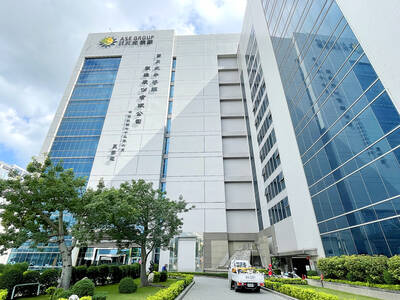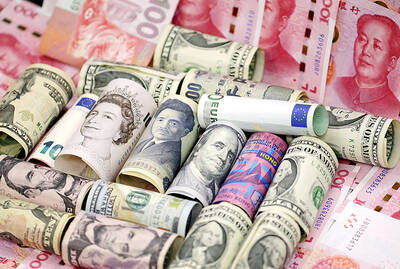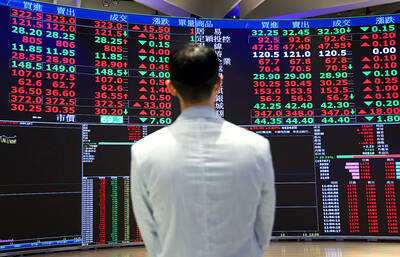Spain created an emergency fund to protect regional governments from defaulting and warned that pensions will be overhauled as protesters rallied on Friday against deep spending cuts needed to dodge an international bailout.
After a weekly Cabinet meeting, the government gave details of the 65 billion euro (US$80 billion) austerity package Spanish Prime Minister Mariano Rajoy announced on Wednesday.
Spain — which enjoyed 30 years of almost uninterrupted economic growth until 2007 — is on the front line of the two-and-a-half-year eurozone debt crisis, weighed down by crippled banks, indebted regions and a deep economic downturn.

Photo: Reuters
Ministers approved a reform of city and regional governments, wage cuts for public workers and cuts in unemployment benefits. The government confirmed it would enforce reforms this month of the energy sector, and rail, road and air transport.
Workers blocked streets and railways in Madrid, protesting against cuts that they said hurt ordinary people more than the bankers and politicians blamed for the country’s economic crisis. Unions called for a September strike.
In the evening, about 2,000 people gathered in central Madrid, chanting and jeering. Police fired rubber bullets to disperse the crowds, injuring two, emergency services said. Six people were arrested, police said.
Civil servants gathered outside the presidential palace, booing the ministers’ convoy of cars as Rajoy’s Cabinet convened under pressure from eurozone leaders and financial markets to approve its new budget plan.
“Spaniards are living today one of the most difficult and traumatic moments of our history,” Spanish Deputy Prime Minister Soraya Saenz de Santamaria told a news conference after the meeting.
Spain’s borrowing costs have soared in recent months and many investors believe that after seeking up to 100 billion euros for its banks, the government could soon follow Greece, Ireland and Portugal in seeking a state bailout.
As expected, the government approved on Friday a new mechanism to help Spain’s 17 autonomous regions — now shut out of international financial markets — to fund themselves and repay their debts.
The instrument, which will have a maximum capacity of 18 billion euros, will be funded through a 6 billion euro loan from the state lottery and by the Spanish Treasury.
However, the regions will retain full responsibility to repay any loan they obtain from the fund and they will have to meet conditions including more work on cutting their public deficits.
Spanish Economy Minister Luis de Guindos said the Spanish Treasury, whose credit rating is already on the verge of junk territory and could be affected by this new burden, would not change its debt issuance calendar.
Among other expected measures, the government said increases in value-added tax (VAT) rates would take effect on Sept. 1, after the end of the tourism season.
The general VAT rate will be raised to 21 percent from 18 percent and the reduced rate for the leisure industry to 10 per cent from 8 percent. Tax breaks on properties will be eliminated.
Saenz de Santamaria said the government would discuss a bill to overhaul the pension system with other political parties. Such a reform — which would break one of the last campaign pledges Rajoy has so far managed to keep — is a longstanding demand of the IMF and European Commission.
Rajoy said on Wednesday the discussion would be based on recommendations from the EU to establish a stronger link between the pension schemes and life expectancy.
Analysts believe this latest austerity package, although it may have won Spain time with markets and praise from Europe, could deepen the country’s economic woes rather than solve them.
Spain’s government has few cards left to play to avoid a state bailout, analysts say. Falling revenues will make it hard to control spiraling debt and meet deficit targets, even after they were eased this week.

EXPANSION: The investment came as ASE in July told investors it would accelerate capacity growth to mitigate supply issues, and would boost spending by 16 percent ASE Technology Holding Co (ASE, 日月光投控), the world’s biggest chip assembly and testing service provider, yesterday said it is investing NT$17.6 billion (US$578.6 million) to build a new advanced chip packaging facility in Kaohsiung to cope with fast-growing demand from artificial intelligence (AI), high-performance-computing (HPC) and automotive applications. The new fab, called K18B, is to commence operation in the first quarter of 2028, offering chip-on-wafer-on-substrate (CoWoS) chip packaging and final testing services, ASE said in a statement. The fab is to create 2,000 new jobs upon its completion, ASE said. A wide spectrum of system-level chip packaging technologies would be available at

Taiwan’s foreign exchange reserves hit a record high at the end of last month, surpassing the US$600 billion mark for the first time, the central bank said yesterday. Last month, the country’s foreign exchange reserves rose US$5.51 billion from a month earlier to reach US$602.94 billion due to an increase in returns from the central bank’s portfolio management, the movement of other foreign currencies in the portfolio against the US dollar and the bank’s efforts to smooth the volatility of the New Taiwan dollar. Department of Foreign Exchange Director-General Eugene Tsai (蔡炯民)said a rate cut cycle launched by the US Federal Reserve

HEAVYWEIGHT: The TAIEX ended up 382.67 points, with about 280 of those points contributed by TSMC shares alone, which rose 2.56 percent to close at NT$1,400 Shares in Taiwan broke records at the end of yesterday’s session after contract chipmaker Taiwan Semiconductor Manufacturing Co (TSMC, 台積電) hit a fresh closing-high amid enthusiasm toward artificial intelligence (AI) development, dealers said. The TAIEX ended up 382.67 points, or 1.45 percent, at the day’s high of 26,761.06. Turnover totaled NT$463.09 billion (US$15.22 billion). “The local main board has repeatedly hit new closing highs in the past few sessions as investors continued to embrace high hopes about AI applications, taking cues from a strong showing in shares of US-based AI chip designer Nvidia Corp,” Hua Nan Securities Co (華南永昌證券) analyst Kevin Su

Nvidia Corp’s major server production partner Hon Hai Precision Industry Co (鴻海精密) reported 10.99 percent year-on-year growth in quarterly sales, signaling healthy demand for artificial intelligence (AI) infrastructure. Revenue totaled NT$2.06 trillion (US$67.72 billion) in the last quarter, in line with analysts’ projections, a company statement said. On a quarterly basis, revenue was up 14.47 percent. Hon Hai’s businesses cover four primary product segments: cloud and networking, smart consumer electronics, computing, and components and other products. Last quarter, “cloud and networking products delivered strong growth, components and other products demonstrated significant growth, while smart consumer electronics and computing products slightly declined,” compared with the